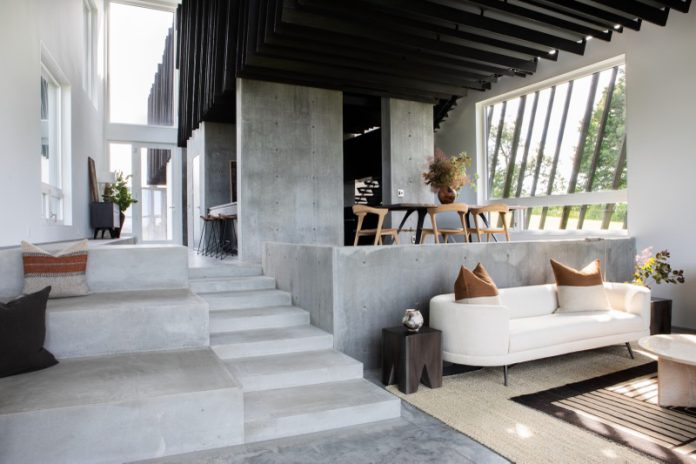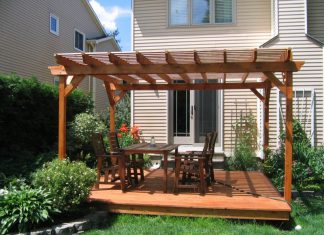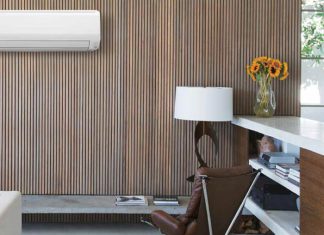Within the world of interior design, the meaning of minimalism has undergone a significant transformation, transcending its origins as a fleeting trend to emerge as a favored lifestyle choice for numerous individuals. This kind of approach to interior design is defined by its emphasis on simplicity, clean lines, and an unwavering commitment to functionality, and it has garnered global recognition.
Nevertheless, the pursuit of a genuinely minimalist living space entails a thoughtful examination of all its components, including the architectural hardware. In the sections that follow, we’ll delve into the contemporary architectural hardware trends that seamlessly align with the minimalist interior design principles.
Minimalism: A Design Philosophy
Minimalist interior design revolves around the concept of “less is more.” It’s a philosophy that aspires to craft spaces devoid of clutter, superfluous embellishments, and distractions. The ultimate aim is to foster an atmosphere of serenity and tranquility within a room, providing a soothing sanctuary from the hectic external environment. To bring this vision to life, each facet of the design, from architectural hardware to every other element, must be selected thoughtfully and with precision.
Sleek and Streamlined Door Hardware
When talking about doors within the realm of minimalist interior design, the emphasis lies in choosing door hardware that is sleek and streamlined. The era of ornate and decorative handles and knobs belongs to the past. Instead, the aim is to select modern, straightforward handles with clean and minimalist lines. Lever handles, in particular, have gained popularity for their ability to provide a minimalist and modern appearance while also being user-friendly.
Recessed Hardware
Opting for recessed hardware, such as cabinet pulls and door handles, is a smart choice when curating a minimalist interior. These handles are ingeniously designed to sit flush with the surface, resulting in a seamless and uncluttered aesthetic. Recessed hardware effortlessly integrates into the minimalist design, discreetly playing its role without grabbing undue attention. Furthermore, the fact that these hardware pieces come in a variety of finishes makes it possible to seamlessly integrate them with the broader color palette of your space.
Hidden Hinges
When it comes to minimalist interior design, concealed or hidden hinges are an ideal choice. These hinges are cleverly crafted to remain hidden within the door or cabinet, removing any visible hardware that might disrupt the clean lines of the space. Not only do hidden hinges align seamlessly with the minimalist aesthetic, but they also elevate the functionality of the design by enabling doors to swing open fully without any obstructions.
Monochromatic Finishes
In the world of minimalism, there’s a recurring theme of keeping a tight rein on the color palette, with a strong leaning towards neutral shades like white, black, gray, and beige. To harmonize with this color scheme, consider opting for glass partition hardware adorned with monochromatic finishes. Choices like matte black and brushed nickel have gained popularity, thanks to their ability to seamlessly meld with the color palette of a minimalist interior, all while adding to the unobtrusive and understated charm of the overall design.
Push-to-Open Mechanisms
Incorporating push-to-open mechanisms into a minimalist interior is an excellent choice, especially when it comes to cabinets and drawers. Unlike traditional handles or knobs, these mechanisms let you effortlessly open doors and drawers with a gentle push, completely eliminating the necessity for visible hardware. This approach not only elevates the clean and uncluttered appearance but also imparts a modern and futuristic dimension to the overall design.
Modular Shelving Systems
The surge in popularity of modular shelving systems in minimalist interior design can be attributed to their remarkable versatility and adaptability. These systems frequently come equipped with hidden mounting hardware, resulting in a floating illusion. The beauty of modular shelving lies in its ability to tailor your storage solutions to your exact needs, all the while preserving the pristine and uncluttered look that defines minimalist aesthetics. It’s a fantastic means of keeping your space impeccably organized without sacrificing its clean and sleek appearance.
Glass and Lucite Hardware
If you’re aiming to infuse your minimalist interior with an air of elegance and sophistication, give thought to introducing glass or lucite hardware into the mix. These materials work beautifully for cabinet knobs and pulls, offering a translucent and almost ethereal presence. Glass and lucite hardware from leading vendors such as CG Hardware has a knack for seamlessly harmonizing with any color scheme and can introduce a dash of glamour into your otherwise understated design.
Integrated Lighting
In the realm of minimalist interior design, integrated lighting plays a pivotal role. It doesn’t just serve a practical purpose by providing illumination; it also makes a significant contribution to the overall aesthetics of the space. An excellent approach is to contemplate the integration of LED strip lighting into architectural hardware components like under-cabinet fixtures, staircase railings, or shelving. This creates an indirect, gentle glow that enriches the room’s atmosphere, all while preserving the core tenets of the minimalist aesthetic.
Floating Staircases
Staircases often take center stage as significant architectural features in many homes, and within a minimalist interior, it’s imperative to design them in a way that optimizes space and minimizes visual congestion. Floating staircases emerge as an excellent choice in this context, as they foster a feeling of spaciousness and uninterrupted flow in the design. These staircases are ingeniously supported by concealed structural elements, imparting the illusion of a floating, weightless structure that seamlessly harmonizes with the minimalist aesthetic.
Sliding and Pocket Doors
When aiming to maximize your space while upholding the clean lines that define a minimalist interior, the adoption of sliding and pocket doors proves to be a strategic move. These doors do away with the need for swing clearance and traditional door frames, giving rise to a design that seamlessly integrates into the space while maintaining efficiency. Moreover, the hardware you select for these sliding doors can be chosen to complement the overarching design theme, delivering a blend of functionality and aesthetic allure that enhances the overall interior.
Conclusion
To sum it up, the journey to attain a minimalist interior design isn’t solely about decluttering your space; it’s also about the thoughtful curation of architectural hardware that harmonizes with the clean lines, simplicity, and functionality of your design. The trends we’ve explored provide an array of choices to craft a genuinely minimalist interior that blends aesthetics with practicality. Whether you lean towards concealed hardware, monochromatic finishes, or integrated lighting, the central objective remains keeping the design centered on the essentials and cultivating an ambiance of serenity and tranquility within your living or corporate space.













